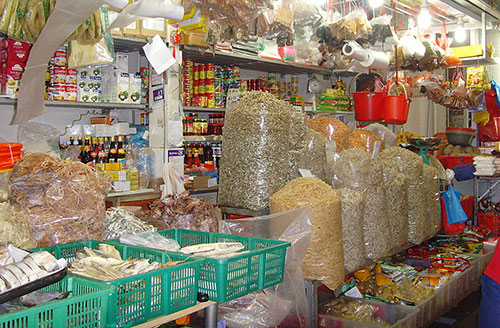How consumers adjust their grocery buying habits in response to rising food prices

illustration photo
The Nielsen study shows that in-home food products were not the only areas of spending impacted by rising food prices. A notable area where 66 per cent of Vietnamese respondents would change their spending include dining out; buying new clothes saw 63 per cent. Meanwhile, nearly half of consumers said they will change spending on recreation, entertainment and vacations. 37 per cent said communications services.
When asked about likely spending changes to specific food categories, 13 per cent of respondents indicated they would buy more fresh or frozen fruits and vegetables. 9 per cent said they would stock up on packaged cereal products. More than half of respondents had no plans to change their spending on staple categories like meat and poultry, fish and seafood and dairy products. 43 per cent said they had no plan to change their spending on bread, bakery goods and organic products.
However, nearly two-thirds of all respondents said they would buy fewer products such as candies, cookies and other sweets, carbonated beverages, alcoholic beverages, prepared meals, chips and other snack foods.
“Traditional trade is still dominant in many countries, and in these markets, commodity purchases are part of consumers’ daily lives,” said James Russo, senior vice president of Global Consumer Insights at Nielsen.
“The challenge for marketers will be introducing new brands and products when food inflation is suppressing the ability of these consumers to grow their shopping baskets,” he added.
The rising food prices also impact where consumers shop. When asked about how rising food prices may affect where they purchase grocery items, almost one-third of Vietnamese respondents indicated they would grow their own food or shop more at de-stocking stores and discount stores and more than half would continue shopping at fresh food markets. Supermarkets were most affected as 47 per cent of respondents admitted to shopping less in these establishments, followed by convenience stores and outlet stores.
“When it comes to rising food prices, nearly everyone feels the pain,” said Russo.
“Determining which product categories have staying power and which are more vulnerable is critical as consumers make trade-offs and tough in-store decisions. “Likewise, as consumers continually look for ways to stretch their budgets and find the best value for money, marketers need to identify retailers that will satisfy the unique demands of consumers around the world,” he continued.
During times of rising food prices, 40 per cent of Vietnamese consumers surveyed said they would use social media to find specials. Thirty-five percent of respondents said they would stock up on regular use items when they are on sale, and 34 per cent said they would purchase only sale price items.
“Understanding brand position within the category demand landscape allows for a tailored food inflation response that will protect the most profitable shoppers with optimum efficiency,” said Russo. “While the strategic response to consumer buying behavior may be consistent across regions, market-by-market tactical variations are essential.”
What the stars mean:
★ Poor ★ ★ Promising ★★★ Good ★★★★ Very good ★★★★★ Exceptional
Latest News
More News
- Joint initiative promotes food safety at traditional markets in Hanoi (September 20, 2024 | 12:40)
- AEON Group donates nearly $105,000 to support people affected by Typhoon Yagi (September 20, 2024 | 08:43)
- Government resolution to support recovery after Typhoon Yagi (September 20, 2024 | 08:41)
- SLP Vietnam joins hands to support recovery from Typhoon Yagi (September 19, 2024 | 16:52)
- EU releases €650,000 in emergency aid to help victims of Typhoon Yagi in Vietnam (September 19, 2024 | 16:32)
- Haiphong picks itself up after typhoon (September 19, 2024 | 15:10)
- Hanoi endures widespread impact from Typhoon Yagi (September 19, 2024 | 15:02)
- Quang Ninh faces $960 million economic hit after Typhoon Yagi (September 17, 2024 | 18:05)
- Businesses are adapt to Vietnam's demographic shifts (September 17, 2024 | 17:43)
- Vietnamese community aids Laos’s post-typhoon recovery efforts (September 17, 2024 | 16:34)

















 Mobile Version
Mobile Version